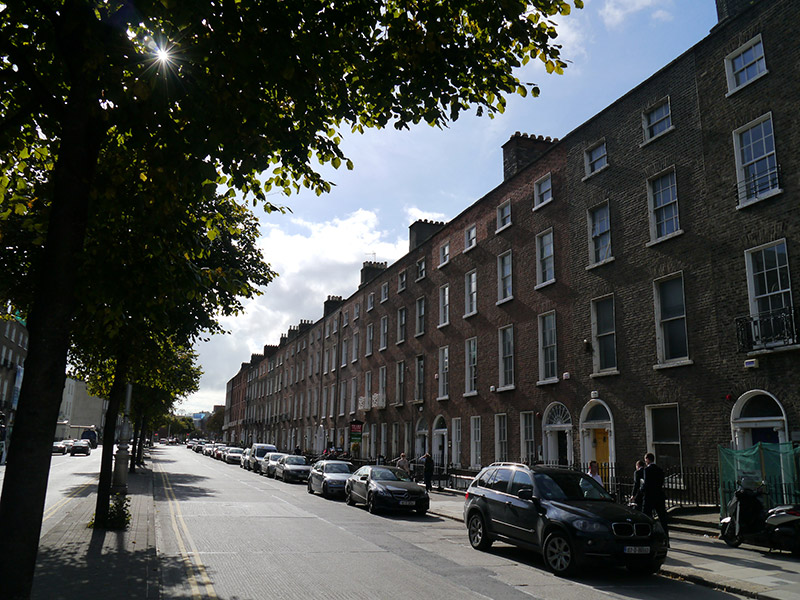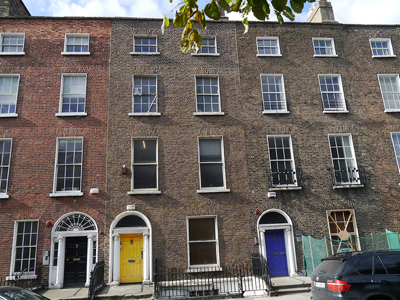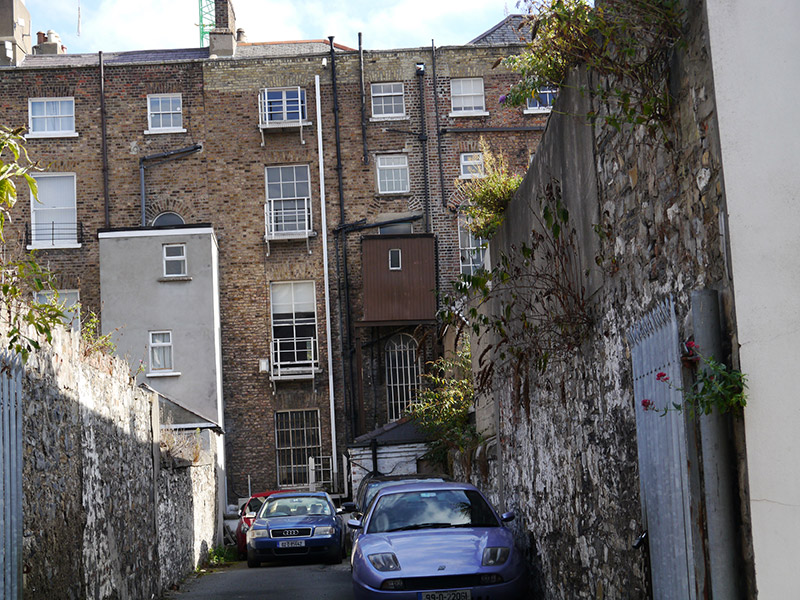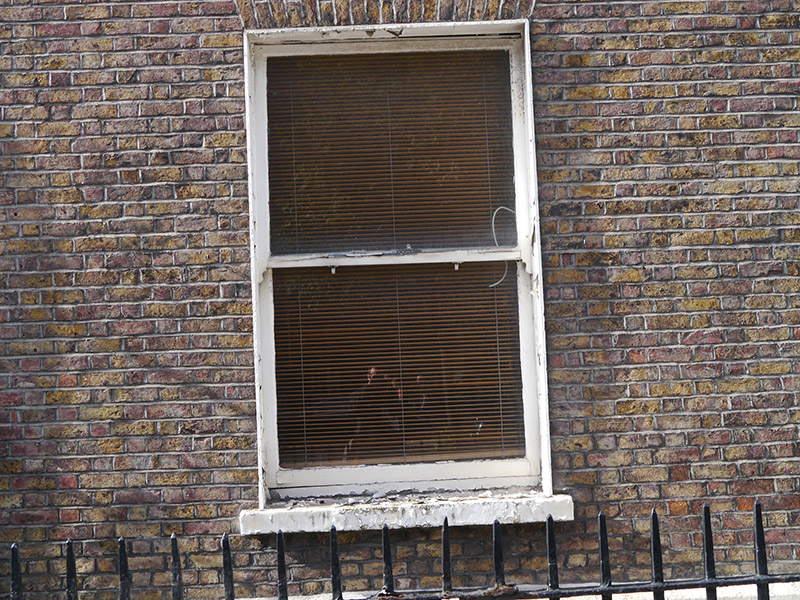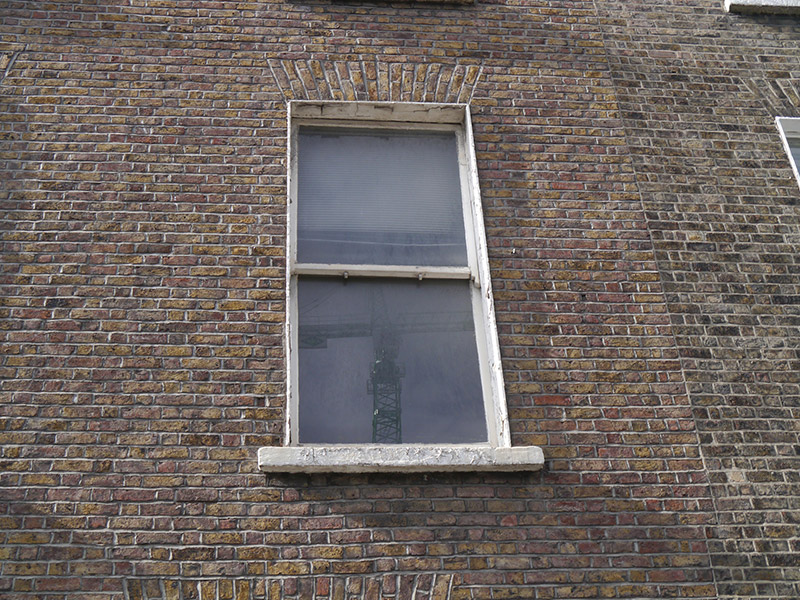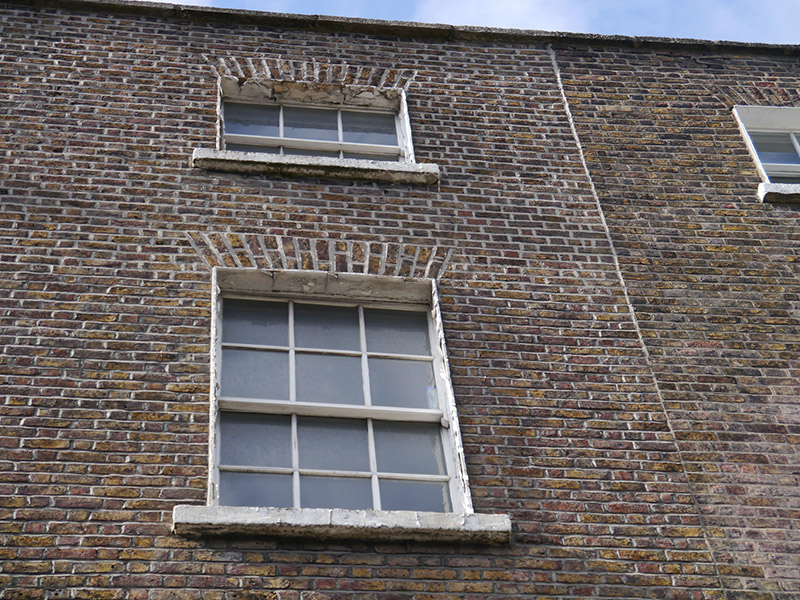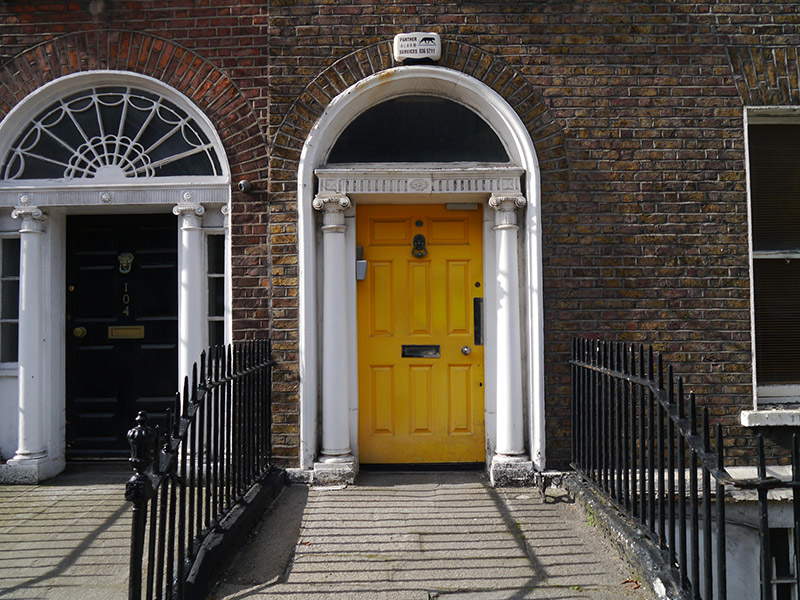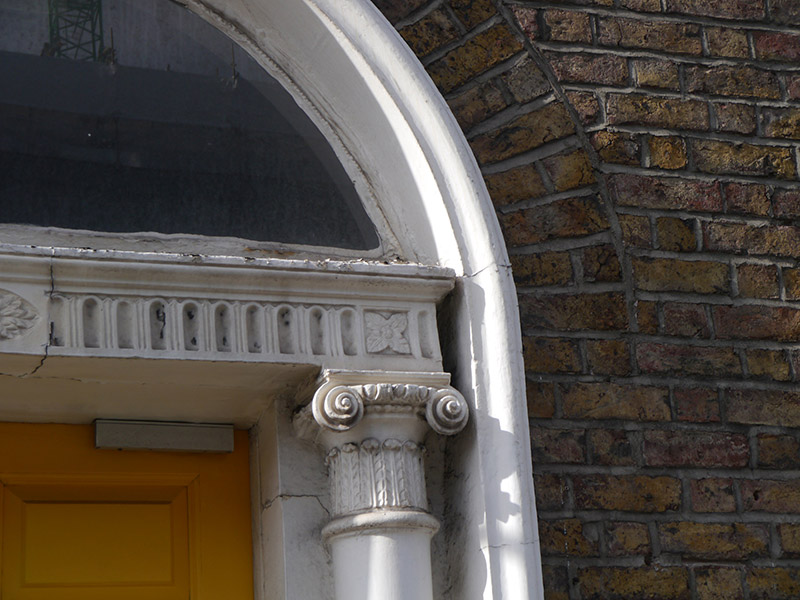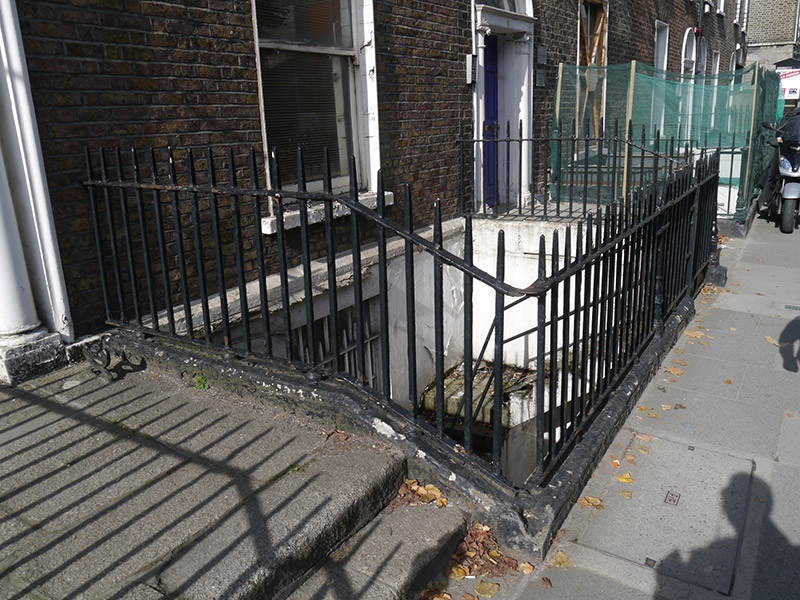Survey Data
Reg No
50930167
Rating
Regional
Categories of Special Interest
Architectural, Artistic
Original Use
House
In Use As
Apartment/flat (converted)
Date
1800 - 1820
Coordinates
316748, 233151
Date Recorded
15/09/2015
Date Updated
--/--/--
Description
Terraced two-bay four-storey former townhouse over basement, built c. 1810, with single-storey hipped return to rear (south). Now in use as flats. M-profile slate roof with terracotta ridge tiles, hipped to east-end, with shouldered red brick and rendered chimneystacks to west party walls with clay pots, concealed behind brick parapet with granite coping, parapet gutters uPVC and cast-iron downpipes to rear. Buff brick walling laid in Flemish bond, rendered walling to basement with granite stringcourse. Square-headed window openings with projecting granite sills, patent reveals and brick voussoirs, openings diminishing to the upper floors, plain rendered surrounds to basement, and largely brick reveals to rear openings. Cast-iron grille affixed to basement north, and ground floor windows to rear. Round-headed opening between ground and first floor to east-side of rear elevation, that above to second floor partially bricked-up and intersected by flat-roofed extension on metal stilts. Variety of multi-paned timber sliding sash windows, largely with horns; some uPVC and timber casements to upper floors of rear. Recent steel balconettes affixed to upper windows on west-side of rear elevation. Round-headed door opening with brick voussoirs to eastern bay of principal elevation with Neo-classical doorcase comprising moulded reveal, engaged Ionic columns supporting fluted frieze with rosettes and moulded cornice, cobwebbed leaded fanlight over eight-panelled timber door with brass furniture. Paved granite entrance platform, with cast-iron boot scraper, accessed from street by two granite steps, flanked by cast-iron railings with decorative corner posts on granite plinth, enclosing basement well to west. Concrete steps with recent steel handrail to basement, door located beneath entrance platform, plainly detailed with timber sheeted-door and plain overlight. Street fronted onto the south side of Baggot Street Lower, abutted by similar terraces to east and west.
Appraisal
Likely to have been built as a cohesive terrace comprising Nos. 105-8 (50930164-7), the buildings are fine examples of late-Georgian townhouses. Despite some replacement fabric insertions, the materials, massing and restrained detailing contribute to the strong architectural continuity which remains on the south-side of Baggot Street Lower. The streetscape is characterised by similar terraced groups, however the subtle discrepancies between the levels, detailing and materials of each is indicative of the speculative nature of development within the street. Baggot Street, as it became known in 1773, is an ancient route from the city which was named after the manor granted to Robert Bagod in the thirteenth-century, called Baggotrath. Developed on Fitzwilliam’s land during the late-eighteenth century, construction of the street progressed slowly due to the economic recession of the 1790s; the area to the west of Fitzwilliam Street was built by the late 1790s but development to the east was more gradual with gaps remaining until the mid-nineteenth century.
